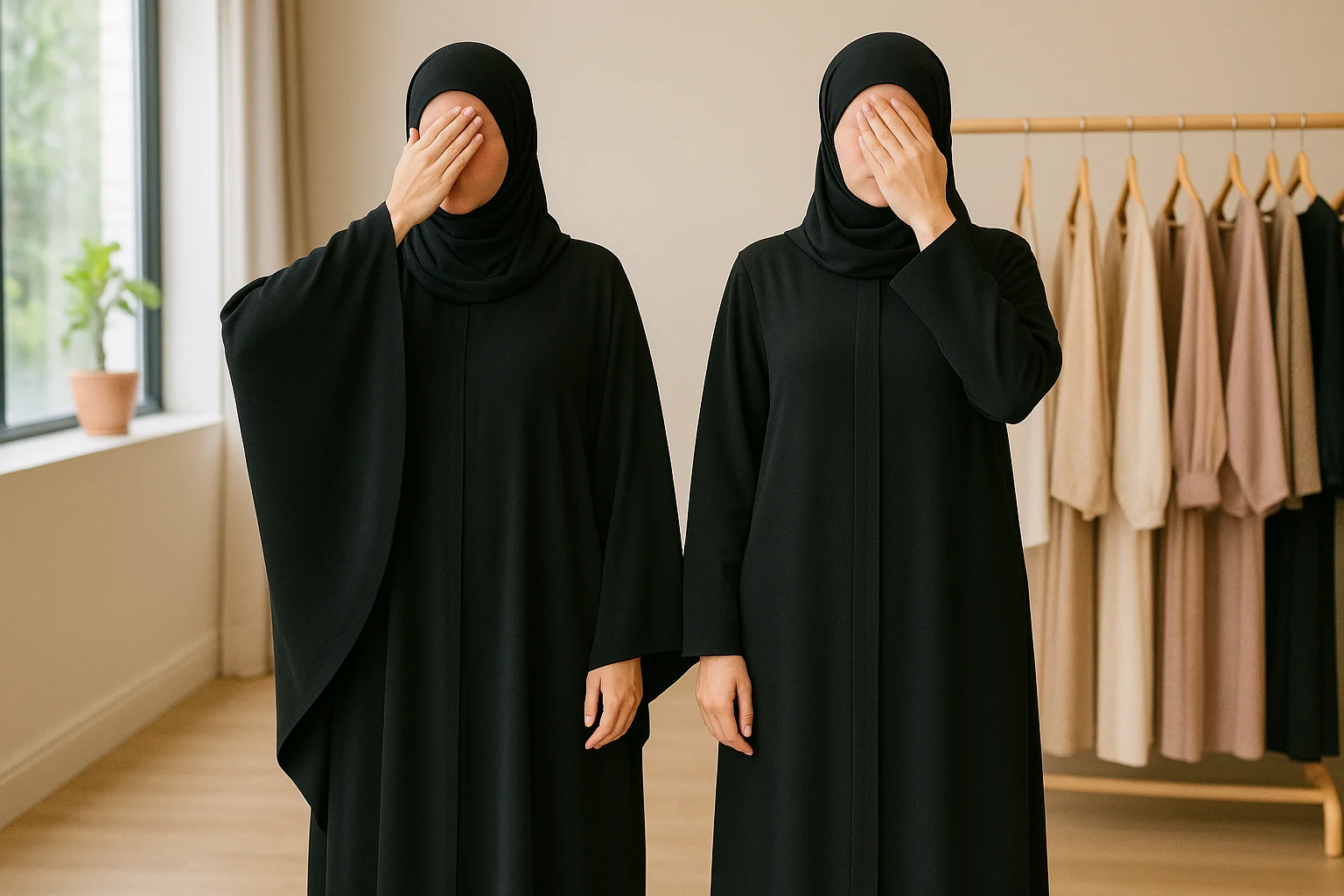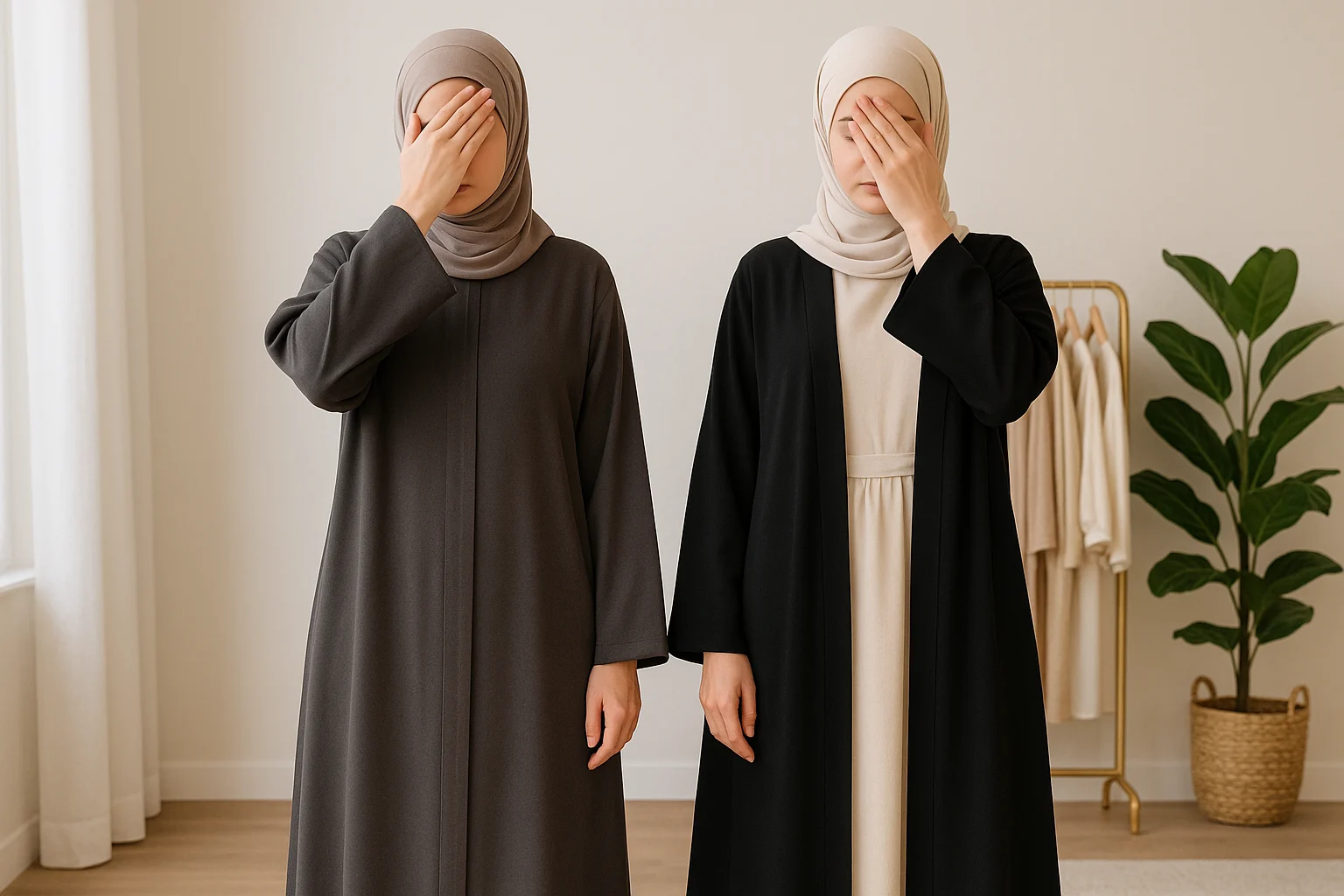You’ve probably asked yourself if the abaya always has to be black. You’re not alone, because many people wonder about it when they see women wearing them in different places. Let me break this down for you clearly and keep things simple.
Why are abayas usually black?
Abayas are usually black because that color became a long-standing cultural choice in many Muslim regions, not because faith demands it. Black fabric blends into crowds, signals modesty, and has been part of tradition for centuries, especially in the Gulf.
Black was easy to find and dye in older times. It didn’t show stains and it lasted longer under strong sun. Communities liked how it didn’t call attention, and this habit passed from one generation to the next. Over time, black became the common look.
Does Islam require abayas to be black?
Islam does not require abayas to be black. The faith asks for modest dress that covers the body, but it does not mention any specific color. Black is cultural, not a religious rule.
When you read scripture or listen to scholars, they agree on one thing. Modesty is the goal, not a fixed shade of fabric. Women in different countries wear abayas in colors that suit their setting. As long as the outfit is loose and respectful, the color is a choice.
What other colors can you wear?
You can wear abayas in colors like sage green, mauve, maroon, pink, or even softer shades like ice blue and blush, as long as the design stays modest and doesn’t draw unwanted attention. Many modern brands now create abayas in these shades and you can also check out designer abayas for unique cuts and premium fabrics.
Fashion has moved forward while keeping roots in modest wear. Designers use soft earthy tones and subtle patterns that fit work or family events. In some shops you’ll find embroidered sleeves, muted blues, or soft pinks that still meet all modesty guidelines.
When do most women still choose black?
Many women still choose black when they visit conservative areas, go to religious sites, or join formal gatherings where black is expected and accepted by all.
In cities like Riyadh or Mecca, black blends in and feels safe. It helps avoid unwanted looks or questions. Older women often prefer black because it feels right for serious settings like prayers, weddings, or funerals. Black also feels respectful when unsure of local customs.
What should you consider before picking a color?
You should consider where you’ll wear it, what local customs say, and how comfortable you feel moving around in that color. These points matter more than following a trend.
Think about weather too. Lighter fabrics in cream or tan can feel cooler under the sun, and soft tones like silver work well when you want something neutral but not dark. In some countries, brighter tones might stand out too much and cause unwanted attention. A simple rule is to look around and match what most women in that place wear.
Common questions people ask
Can I wear a colored abaya anywhere?
Yes, you can wear a colored abaya in most places as long as it’s modest and not flashy. Some regions might still expect black, but there’s no religious law that stops you from wearing another color.
In bigger cities or outside Gulf regions, people often wear brown, gray, or soft greens. Markets and shops in those areas sell many options. It’s still wise to check with someone local if you’re visiting a new country.
Is black better for heat or comfort?
Black can feel warm, but abayas are often made of breathable fabric that lets air flow, so heat isn’t as bad as you might think. Many women wear black comfortably even in hot regions.
Loose designs and light weaves keep the body cool. Some fabrics have a slight shine that reflects light even though they look dark. That’s why black remains common in areas with strong sunlight.
Are colorful abayas accepted by elders?
Yes, most elders accept colored abayas if they follow modest design rules, but some may still prefer black in formal or religious events. Respecting their view shows care for tradition.
At family events you’ll notice some older women pick dark blue or brown instead of jet black. They value simplicity over standing out. If you’re unsure, ask them what they’d like you to wear.
Final thoughts
An abaya does not have to be black. Black became a tradition, but culture and faith leave room for choice. If you’re thinking about wearing one, focus on how modest it is, how you feel in it, and how it fits the setting. That’s all that truly matters.



